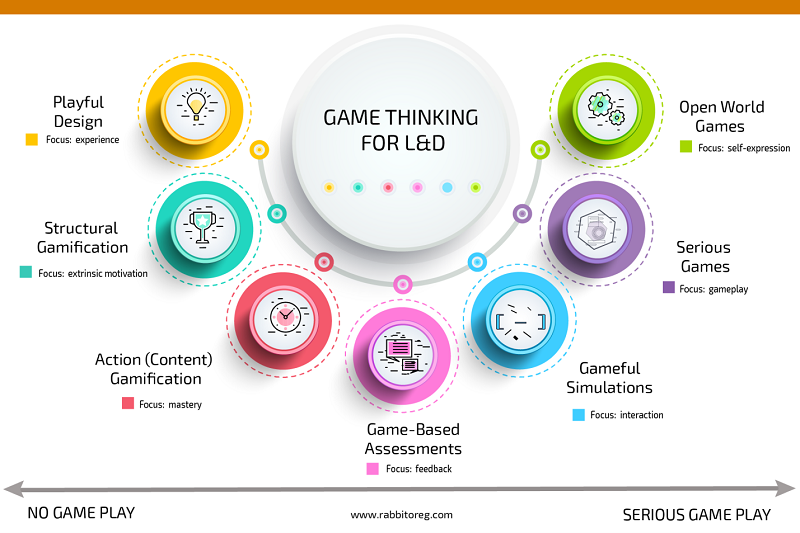ATD Blog
Choose Your Adventure: Gamification for Learning
Wed Sep 05 2018

Bookmark
Gamification has been among the top trends for learning and development in the last couple of years. It is often advertised as the magic pill to turn your dry content into juicy engagement. However, starting with gamification may often feel like a “choose your adventure,” and most people end up with the same route: points, badges, and leaderboards. There’s a different way to navigate.
Do not start with gamification and learners in mind! Start with humans at the workplace in mind—their authentic needs, motivations, and goals.
Fostering Engagement With Gamification: Review of Current Practices on Online Learning Platforms concludes that “the starting point in gamifying online education should be learners’ needs, motivations and goals, rather than a platform-centric approach that strives to use technical features to hit some pre-defined performance metrics.”
Prepping for the Adventure
Before we think about game-anything, let’s attempt to answer the following fundamental questions:
What is the business goal we’re trying to achieve?
How is the result measured?
Who should be involved?
What performance goals would lead to the business goal?
What knowledge, skills, and behaviors would lead to each performance goal?
What should people be doing? What should people not be doing?
Why are people not doing what they’re supposed to be doing? Why are people doing what they’re not supposed to be doing?
What type of performance gaps should we address?
Knowledge recall—Something that people should recall from memory.
Information—Knowledge of how to use performance tools, something they do not need to memorize but apply.
Skills—Something that needs practice.
Motivation—People know what to do, they know how to do it, yet they’re not doing it. This may need more investigation into why.
Environment—Things we can’t control. Bad systems, politics, half-baked processes. What we could do, however, is connect with influencers who may have control over it. Solving this type of issue often requires in-depth business and data literacy.
And finally, ask:
What authentic activities would be most effective in learning?
What is the minimum information or knowledge people need to complete those actions?
I strongly recommend Cathy Moore’s action-mapping process to answer these questions.
Starting the Adventure
Now that we have identified the actions people should take, we can put our game-thinking hat on. The adventure should never start with content, it should start with actions people take at the workplace to achieve their goals. Think like a game designer, act like an instructional designer! Game thinking keeps humans in mind, while solving the problems at hand.
Let’s look at seven different approaches to start your adventure:

On the left side of the spectrum, there is no game play. People don’t learn through game play, even if the experience is gameful. On the right side of the spectrum, it’s all about game play. People learn through playing games. Your adventure is not a fork-in-the-road decision between games or no games. Think about it as a continuous spectrum from left to right. The more game elements you include starting from the left, the more the end product will look and feel like a game.
Playful Design Focuses on Experience
As you answered all the questions above, you may see that there is no need to waste resources on building games or gamification; however, you want the experience to feel playful. According to A Systematic Mapping on Gamification, “playful design” means using game-based aesthetics or limited usability based on game elements in non-game contexts with the purpose of drawing the user's attention. These elements are used to amuse learners and evoke an emotional response.
Structural Gamification Focuses on Extrinsic Motivation
Karl Kapp differentiates two types of gamification in learning: structural and content. Structural gamification gamifies the learning structure, the framework outside the learning content. For example, you may add points to your video platform for people who launch learning content. People may get points for viewing and commenting on content. The content itself does not change, only the motivation to interact with the content is targeted—mostly by offering incentives.
Action (Content) Gamification Focuses on Mastery
Dr. Kapp refers to this type of gamification as content gamification. I often see instructional designers less experienced in game design think in content rather than in experience. Therefore, I propose calling this “action gamification,” where we focus on actions and decisions people need on the job (uncovered by Cathy Moore’s action mapping). The activity in the learning context should be aligned to the real actions.
Game-Based Assessments Focus on Feedback
Think of game-based assessments as game show templates or simple game-play activities, often presented in multiple-choice questions. The focus of game-based assessments is on feedback and not learning new knowledge and skills. You may use these for pre-assessment or review, but usually not for presenting new content.
From game-based assessment on to the right, we’re entering the game-based learning territory. As learning through game play gradually takes center stage on the right, the experience is very different from gamification—and that is an adventure for a different article to explore.
Want to learn more? Join me October 11-12 in New Orleans for the ATD Core 4 Conference.
More from ATD

